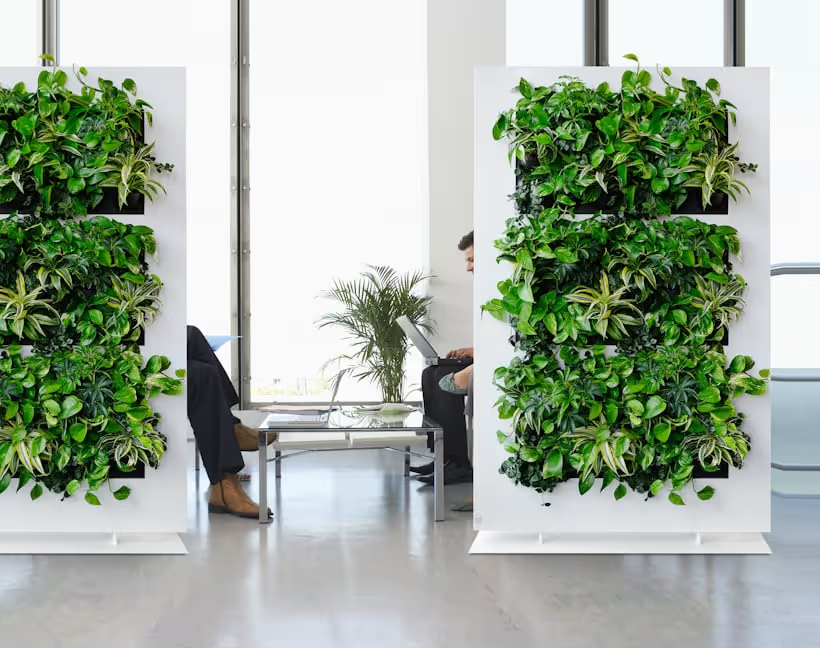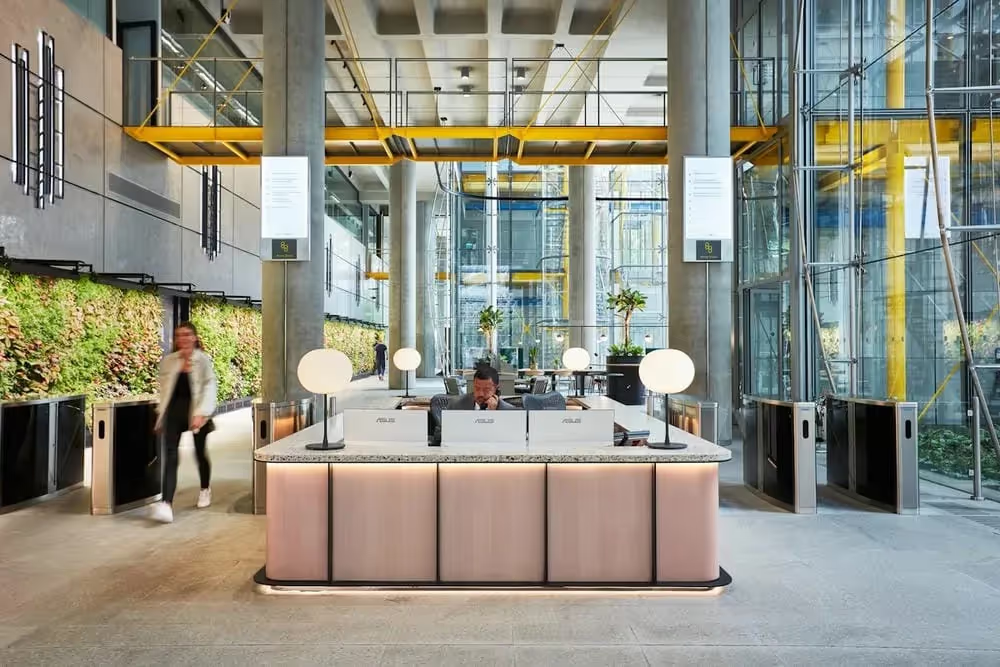Exploring the Mental and Physical Health Benefits of Biophilic Design Through Indoor Plant Walls

Throughout history, architecture has served as a reflection of society, adapting to the shifting demands and priorities of its inhabitants. From grandiose palaces to minimalist modernism, each era bore witness to the unique essence of its time. As we move further into the 21st century, our lifestyles and environments have undergone remarkable transformations. The once-prevalent spacious gardens and open landscapes have increasingly given way to towering skyscrapers and compact living spaces. While this urbanization has brought undeniable progress and opportunity, it has also left in its wake a yearning for the solace that nature provides.
In our rapidly urbanising cities, where concrete jungles often dominate the landscape, the longing for a connection with nature becomes more profound than ever before. As a response to this growing desire, designers and architects have ingeniously embraced the concept of Biophilic Design, a paradigm that seeks to harmoniously merge the outdoors with indoor spaces, transforming them into green sanctuaries for city dwellers to enjoy.
In this article, we look at the principles of Biophilic Design, with particular reference to Indoor Plant Walls, and explore the immense benefits they have on the mental and physical well-being of inhabitants.
What are the Principles of Biophilic design?
Biophilic design is a holistic design approach that seeks to bridge the gap between our increasingly urbanised lives and our intrinsic connection with nature. It goes beyond mere aesthetics and delves deep into our biological affinity for the natural world. By incorporating elements such as plants, water features, natural light, and even nature-inspired materials, biophilic design creates a harmonious environment that nurtures our well-being on multiple levels.
Our evolutionary history has instilled in us a fundamental need to be surrounded by nature and its cycles. This connection is far from being a relic of the past; rather, it remains crucial for our health, wellness, fitness, and happiness in the modern era.
One of the key pillars of biophilic design is “Nature in a Space” which places value on bringing the outdoors inside. Indoor living walls are a perfect example of this principle. These green walls not only add visual appeal but also improve air quality and create a calming atmosphere, reducing stress and promoting a sense of tranquillity in our fast-paced urban environments.
As urbanisation continues to shape our cities, embracing biophilic design becomes increasingly relevant in addressing the challenges posed by modern living. Biophilic design is a powerful reminder that despite our technological advancements, our bond with the natural world remains an essential aspect of what it means to be a healthy and happy human.

What are the Physical and Mental Health Benefits of Biophilic Design Through Indoor Plant Walls?
Biophilic design, particularly through the incorporation of Indoor Plant Walls, offers a plethora of physical and mental health benefits, making them a perfect addition to workplaces, and other urban commercial settings. Let's explore some of the key advantages:
Physical Health Benefits:
- Improved Air Quality: Indoor plants are natural air purifiers, absorbing harmful pollutants and releasing oxygen. They help remove toxins like formaldehyde, benzene, and volatile organic compounds (VOCs) from the air, leading to cleaner and healthier indoor environments.
- Humidity Regulation: Plants release moisture through a process called transpiration, which can help maintain optimal indoor humidity levels. Adequate humidity can reduce the risk of respiratory issues, dry skin, and respiratory infections.
- Reduced Stress and Blood Pressure: Studies have shown that being in the presence of greenery and nature can lead to reduced stress levels and lower blood pressure. Indoor Plant Walls create a soothing and calming atmosphere, promoting relaxation and overall well-being.
- Enhanced Immune Function: Some research suggests that exposure to nature and green spaces can boost the immune system, potentially reducing the frequency and severity of illnesses.
- Noise Reduction: Indoor plants can act as natural sound absorbers, dampening noise levels and creating a quieter and more peaceful indoor environment.
WHO Geneva HQ

Mental Health Benefits:
- Stress Reduction: Biophilic design, particularly the presence of plants, has been linked to reduced stress and anxiety levels. Being surrounded by greenery and natural elements can create a sense of tranquillity and promote relaxation.
- Improved Mood: The presence of plants and nature indoors has been associated with enhanced mood and increased feelings of happiness and contentment.
- Enhanced Cognitive Function: Exposure to nature and natural elements has been shown to improve cognitive function, including memory, attention, and problem-solving skills.
- Increased Productivity and Creativity: Incorporating Indoor Plant Walls in workspaces has been found to boost productivity and creativity, fostering a more conducive and enjoyable work environment.
- Faster Recovery: Studies have suggested that access to nature and green spaces, even in indoor settings, can aid in the recovery process for individuals healing from illness or surgery.
- Sense of Connection: Biophilic design fosters a sense of connection with nature, even in urban environments, helping to counteract feelings of disconnection and isolation.
By integrating nature into our indoor spaces, we can create environments that promote well-being, foster a sense of calm, and contribute to a healthier and happier lifestyle. Whether at home, in the workplace, or in public spaces, embracing biophilic design can have a positive impact on our lives and the overall quality of inhabitants’ lives.
Biophilic design through Indoor Living walls from Viritopia
Are you in the early stages of development? Are you looking to capitalise on environmental assets? Are you interested in learning more about living walls? Then look no further. Our team at Viritopia has you covered.
Viritopia has over 20 years of experience designing and maintaining biophilic infrastructure to create a detailed analysis of how a scheme will meet regulatory requirements. We help with a faster planning process and provide you with what’s needed to take your project to the next level. Head to our site to book a living wall consultancy or explore more about our green walls and their benefits.
Explore more insights
Discover the latest in green infrastructure

Vanguard Logistics Park (Longmore) Featured in RIBA Commercial Directory 2025

Green Roof Advantages & Disadvantages

Design with meaning: How office living walls reflect your brand

